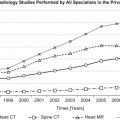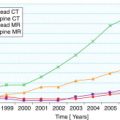With the onset of the human immunodeficiency virus pandemic, the incidence of tuberculosis, including central nervous system (CNS) tuberculosis, has increased in developed countries. It is no longer a disease confined to underdeveloped and developing countries. The imaging appearance has become more complex with the onset of multidrug-resistant tuberculosis. Imaging plays an important role in the early diagnosis of CNS tuberculosis and may prevent unnecessary morbidity and mortality. This article presents an extensive review of typical and atypical imaging appearances of intracranial tuberculosis, and discusses pathogenesis, patterns of involvement, and advances in imaging of intracranial tuberculosis.
- •
Tuberculosis (TB) is a global clinical concern, particularly after the human immunodeficiency virus pandemic.
- •
Imaging, particularly magnetic resonance imaging, is a cornerstone in the diagnosis as well as follow-up of central nervous system (CNS) tuberculosis.
- •
Imaging appearance of CNS TB is becoming more and more complex and atypical with the onset of multidrug-resistant tuberculosis.
- •
Early, accurate diagnosis can help in preventing morbidity and mortality.
- •
Newer imaging techniques like magnetic resonance spectroscopy help to improve characterization and thus aid in diagnosis of atypical CNS TB.
Introduction
Tuberculosis (TB) remains a prominent global problem especially because of the increasing incidence of human immunodeficiency virus (HIV) and drug-resistant strains, although its incidence seems to have declined recently. According to the World Health Organization report, 1.3 million deaths were caused by TB in 2008, which is equivalent to 20 deaths per 10,000 population. Among all other forms of TB, central nervous system (CNS) TB accounts for approximately 1% and has the highest mortality. Although diagnostic evaluation includes various microbiological, pathologic, molecular, and biochemical investigations, imaging modalities have an important diagnostic role. Imaging helps in early diagnosis and helps in preventing morbidity and mortality. Imaging is essential in showing complications in addition to diagnosis of CNS TB.
Pathogenesis
Mycobacterium TB is the most common organism causing tuberculous infection of CNS. Other species of mycobacteria may be involved in immunocompromised patients. Based on the observations of Rich and McCordock, a 2-step model has been proposed for the pathogenesis of CNS TB. During the initial pulmonary infection, tuberculous bacteria may enter the systemic circulation and subsequently reach the oxygen-rich CNS, establishing a focus called the Rich focus. This focus may be in the meninges, subpial or subependymal region of the brain, or the spinal cord. Later, this may rupture into the subarachnoid space or ventricular system leading to meningitis. The probability of the organism reaching the brain depends on the extent of bacteremia and the immune response of the host.
Meninges may be secondarily involved because of rupture of a tuberculoma into a vessel in the subarachnoid space, or rupture of miliary tubercles in miliary TB. There can be contiguous spread of infection from the adjacent bone. but this is uncommon. Cell-mediated immunity is responsible for the formation of dense, gelatinous, inflammatory exudate along the basal surface of the cerebrum. Severe cases may show leptomeningeal involvement over the cerebral convexities, and extension into the ventricular system can cause ependymitis and choroid plexitis. Parenchymal tuberculous focus can develop into tuberculoma or brain abscess in the absence of adequate immunity or in the presence of a sizable tuberculous focus.
Imaging of CNS TB can be divided into types of involvement, as listed in Box 1 .
Intracranial TB
- •
Meningeal TB
- ○
Tuberculous leptomeningitis
- ○
Pachymeningeal TB
- ○
- •
Complications of TB meningitis (TBM)
- ○
Hydrocephalus
- ○
Tuberculous vasculitis
- ○
Cranial nerve involvement
- ○
- •
Sequel of TBM
- •
Parenchymal TB
- ○
Tuberculomas
- ○
Tuberculous abscess
- ○
Tuberculous cerebritis
- ○
Tuberculous encephalopathy
- ○
Intraspinal TB
- •
Typical spinal TB
- ○
Spondylodiscitis
- ○
- •
Atypical spinal TB
- ○
Intramedullary TB
- ○
Solitary vertebral body involvement
- ○
Pure posterior-element TB
- ○
Tubercular arachnoiditis
- ○
Pathogenesis
Mycobacterium TB is the most common organism causing tuberculous infection of CNS. Other species of mycobacteria may be involved in immunocompromised patients. Based on the observations of Rich and McCordock, a 2-step model has been proposed for the pathogenesis of CNS TB. During the initial pulmonary infection, tuberculous bacteria may enter the systemic circulation and subsequently reach the oxygen-rich CNS, establishing a focus called the Rich focus. This focus may be in the meninges, subpial or subependymal region of the brain, or the spinal cord. Later, this may rupture into the subarachnoid space or ventricular system leading to meningitis. The probability of the organism reaching the brain depends on the extent of bacteremia and the immune response of the host.
Meninges may be secondarily involved because of rupture of a tuberculoma into a vessel in the subarachnoid space, or rupture of miliary tubercles in miliary TB. There can be contiguous spread of infection from the adjacent bone. but this is uncommon. Cell-mediated immunity is responsible for the formation of dense, gelatinous, inflammatory exudate along the basal surface of the cerebrum. Severe cases may show leptomeningeal involvement over the cerebral convexities, and extension into the ventricular system can cause ependymitis and choroid plexitis. Parenchymal tuberculous focus can develop into tuberculoma or brain abscess in the absence of adequate immunity or in the presence of a sizable tuberculous focus.
Imaging of CNS TB can be divided into types of involvement, as listed in Box 1 .
Intracranial TB
- •
Meningeal TB
- ○
Tuberculous leptomeningitis
- ○
Pachymeningeal TB
- ○
- •
Complications of TB meningitis (TBM)
- ○
Hydrocephalus
- ○
Tuberculous vasculitis
- ○
Cranial nerve involvement
- ○
- •
Sequel of TBM
- •
Parenchymal TB
- ○
Tuberculomas
- ○
Tuberculous abscess
- ○
Tuberculous cerebritis
- ○
Tuberculous encephalopathy
- ○
Intraspinal TB
- •
Typical spinal TB
- ○
Spondylodiscitis
- ○
- •
Atypical spinal TB
- ○
Intramedullary TB
- ○
Solitary vertebral body involvement
- ○
Pure posterior-element TB
- ○
Tubercular arachnoiditis
- ○
Tuberculous meningitis
Tuberculous Leptomeningitis
After reaching the subarachnoid space, tuberculous focus leads to formation of thick, gelatinous, inflammatory exudate. It affects basal cisterns, sylvian fissures, and, rarely, leptomeninges over cerebral convexities. The exudate in the basal cisterns can cause obstruction to cerebrospinal fluid (CSF) flow, causing hydrocephalus, and can compress cranial nerves. Cerebral infarction can occur because of obliterative vasculitis, the vessels at the base of the brain being severely affected. Granulomas may coalesce to form tuberculomas or, rarely, an abscess. Thus, common imaging triad includes abnormal meningeal enhancement predominantly in the basal regions of brain and its associated complications of hydrocephalus and infarcts. This triad is specific for the diagnosis of TBM.
Kumar and colleagues found that the presence of basal enhancement, hydrocephalus, tuberculoma, and infarction were more common in TBM than in children with pyogenic meningitis. They reported that basal enhancement, tuberculomas, or both were 100% specific and 89% sensitive for the diagnosis of TBM. Andronikou and colleagues suggested 9 criteria for the diagnosis of TBM on computed tomography (CT). Przybojewski and colleagues evaluated these 9 criteria and showed high specificity for all the criteria, and 100% specificity for 4 individual criteria. It has been shown that sensitivity has been improved when more than 1 criterion was present. Presence of hyperdensity on precontrast scans in the basal cisterns might be the specific sign of TBM in children.
Magnetic resonance (MR) imaging has been shown to be superior to CT in evaluating patients with suspected meningitis and its associated complications. In the early stages, noncontrast MR imaging shows little or no evidence of meningitis. Mild shortening of T1 and T2 relaxation times of CSF occurs as the disease progresses. Contrast-enhanced MR imaging has the added advantage of showing meningitis and its associated complications compared with contrast-enhanced CT and noncontrast MR imaging. Abnormal meningeal enhancement is seen in the basal cisterns, and sylvian fissures, and severe and late-stage TBM can show enhancement over the convexities ( Fig. 1 ). Tentorial and cerebellar meningeal involvement is less common.
Minimal or absent meningeal enhancement has been reported in patients with acquired immune deficiency syndrome (AIDS) by some investigators, likely caused by the lack of immunologic response. In contrast, others have reported no significant difference in the imaging appearances in these patients compared with immunocompetent patients. Classic features of basal exudates, hydrocephalus, infarcts, and granulomas may not be seen in the elderly population, which has been attributed to age-related senescence of the immune system.
Magnetic transfer (MT) MR imaging is an important technique and is considered superior to conventional MR imaging for showing abnormal meninges. It also helps in differentiating tuberculous meningitis from other causes of meningitis. On MT imaging, abnormal meninges appearing hyperintense on precontrast T1-weighted (T1W) MT images is considered to strongly suggest tuberculous meningitis. Also, the MT ratio (MTR) is significantly different from brain parenchyma and inflamed meninges, because the inflammatory exudate in TBM is composed of cellular infiltrate, degenerated and partially caseated fibrin, tubercles, and, less commonly, bacilli.
Border Zone Encephalitis
The brain parenchyma immediately adjacent to the inflammatory exudate shows edema, perivascular infiltration, and a microglial reaction, known as border zone reaction ( Fig. 2 ). Identification of border zone encephalitis is difficult because the hyperintense T2 signal in these regions merges with the bright signal of the leptomeningeal exudate.
Complications of meningitis include hydrocephalus, vasculitis, cranial nerve involvement, and associated multiple tuberculomas.
Hydrocephalus
Hydrocephalus can be communicating, noncommunicating, or complex in patients with TBM. Tubercular hydrocephalus is usually communicating, accounting for 80% of cases. It occurs because of obstruction to CSF flow in the basal cisterns by inflammatory exudate ( Fig. 3 ). Noncommunicating or obstructive hydrocephalus can occur either because of obstruction of fourth ventricular outlet foramina by the basal exudates or mass effect by a focal parenchymal tuberculoma, because of brain abscess, or because of entrapment of part of a ventricle by ependymitis ( Fig. 4 ). Periventricular hypodensity on CT and periventricular hyperintense signal on proton density and T2-weighted (T2W) images on MR imaging indicate interstitial edema caused by periventricular ooze of CSF secondary to increase in intraventricular pressure.
Complex hydrocephalus can be seen in TB with a combination of noncommunicating (obstructive) and communicating (defective absorption) hydrocephalus ( Fig. 5 ). Yadav and colleagues reported a high incidence of complex hydrocephalus in patients with TBM and found it to be a cause of failure of endoscopic third ventriculostomy.
It is important to determine the type of hydrocephalus and the site of obstruction to define the optimal treatment option and also because of the possible complication of cerebral herniation in noncommunicating hydrocephalus. In addition, the type of hydrocephalus predicts the outcome of endoscopic third ventriculostomy. CT cannot predict the level of CSF block in TBM because both types of hydrocephalus can present with panventricular dilatation.
MR imaging, with its newer sequences, helps in differentiating the type of hydrocephalus and provides most details of brain and CSF pathways. Qualitative and quantitative information of CSF flow and dynamics can be obtained by MR imaging. The disadvantage of MR imaging is that the flow around the fourth ventricle may not easily be evaluated. In addition, MR imaging may not be readily available in resource-poor countries where TB is more common. MR imaging also plays an important role in the postoperative evaluation of patients with endoscopic third ventriculostomy.
Radiograph/CT pneumoencephalography or contrast-enhanced cisternography done via lumbar puncture may help in differentiating communicating and noncommunicating hydrocephalus. However, because these techniques are invasive and may be associated with complications, they should be used only if MR imaging is not available. MR ventriculography has been used to evaluate CSF flow dynamics and in patients with hydrocephalus.
Vasculitis
The basal exudates cause inflammatory changes in the vessels predominantly involving the circle of Willis. At first, the vessel wall is involved, and later the lumen of the vessel, leading to complete occlusion by reactive subendothelial cellular proliferation and thrombus formation. Middle cerebral and lenticulostriate arteries are the most common vessels involved. The conventional angiographic features of TBM include a triad of a hydrocephalic pattern, narrowing of arteries at the base of the brain, and narrowed or occluded small or medium-sized arteries with early draining veins. CT or MR angiogram reveal small segmental narrowing, uniform narrowing of large segments, irregular beaded appearance of vessels, or complete occlusion ( Fig. 6 ). Gadolinium-enhanced MR angiogram is more sensitive to detect the involvement of smaller vessels.
The reported incidence of infarcts on CT varies from 20.5% to 38%. MR imaging detects a greater number of infarcts and hemorrhagic transformation of infarcts than CT. Most infarcts involve thalamus, basal ganglia, and internal capsule regions. Nair and colleagues described the MR imaging pattern of infarcts in TB. Anterior distribution, particularly in the caudate nucleus and in the presence of multiple infarcts, favored a tuberculous cause, and posterior distribution indicated the possibility of associated risk factors of stroke. Diffusion-weighted MR imaging helps in early detection of infarction and in delineating the extent of infarction, which is of value in the management and prognostication of patients.
Cranial nerve involvement
Cranial nerve involvement in TBM is seen in 17% to 70% of patients. Nerve involvement occurs because of ischemia of the nerve or entrapment of the nerve in basal exudates. Direct mass effect of a tuberculoma on the nerve within the subarachnoid course or by direct involvement of the cranial nerve nuclei in the brain are the other mechanisms ( Fig. 7 ). Fibrotic changes in the late stage can cause permanent loss of function in these nerves.
The affected nerve shows thickening and enhancement on postcontrast images. The proximal portion of the nerve near its root entry is most commonly affected. Localization of the cause of cranial nerve involvement, whether confined to the nerve or its brain stem nucleus, may help in prognostication of patients. Brain stem infarcts are less likely to show significant improvement, whereas the disorder confined to the nerve (neuritis/perineuritis) may improve with treatment.
Sequelae of TBM
Focal or diffuse cerebral atrophy and areas of encephalomalacia secondary to infarcts and hydrocephalus ( Fig. 8 ), meningeal or ependymal calcifications, and occasionally syringomyelia or syringobulbia, are the sequelae of TBM.
Tuberculous Pachymeningitis
Tuberculous pachymeningitis can be localized or diffuse. Pachymeningeal TB can occur as either isolated dural involvement ( Fig. 9 ) or with associated pial or parenchymal lesions. The term en plaque tuberculoma has been used to describe the focal pachymeningeal lesion ( Fig. 10 ). However, this terminology is used to describe all types of tuberculomas with en plaque morphology, including primary intraparenchymal lesions. The lesions are hyperdense on noncontrast CT scans, isointense to brain on T1W MR imaging, and isointense to hypointense on T2W images with homogeneous postcontrast enhancement. However, similar imaging findings can be seen in various causes of inflammatory and noninflammatory conditions, especially meningioma. It is important to diagnose pachymeningeal TB because it responds well to antitubercular treatment and thus should be considered in the differential diagnosis of pachymeningeal abnormalities. If there is evidence of TB elsewhere in the body, it may further suggest the diagnosis.
Parenchymal TB
Parenchymal TB can occur in the form of tuberculoma, brain abscess, tuberculous encephalopathy, and tuberculous cerebritis.
Tuberculoma
Tuberculomas are among the most common intracranial mass lesions and the most common manifestation of parenchymal TB. Tuberculomas can occur at any age. They can be solitary or multiple and can occur anywhere in the brain parenchyma. In children, they predominate in the infratentorial compartment, whereas, in adults, the supratentorial compartment is more commonly affected. Tuberculomas arise when tubercles in the parenchyma of brain enlarge without rupturing into the subarachnoid space. They usually occur in the absence of TBM, but may occur with meningitis because of the extension of CSF infection into the adjacent parenchyma via cortical veins or Virchow-Robin spaces. Presence of tuberculomas at the corticomedullary junction suggests the hematogenous spread of infection, because there is narrowing of the arterioles at the gray/white matter junction.
Tuberculomas show typical granulomatous reaction consisting of epithelioid cells, giant cells mixed with mononuclear inflammatory cells (predominantly lymphocytes) forming a noncaseating granuloma. It subsequently develops a central area of caseating necrosis. The central area of necrosis is initially solid and later may liquefy ( Fig. 11 ).
Patients usually present with headache, seizures, focal neurologic deficit, and features of raised intracranial tension. Infratentorial tuberculomas may present with brainstem syndromes, cerebellar symptoms, and multiple cranial nerve palsies.
Imaging findings depend on the stage of tuberculoma, whether it is noncaseating or caseating with solid or liquid center.
On CT, solid noncaseating granuloma is isodense or slightly hypodense to the surrounding brain parenchyma. On MR imaging, it is hypointense on both T1W and T2W images. They show homogeneous enhancement on post contrast scans ( Fig. 12 ). A caseating granuloma is isointense to hypointense on both T1W and T2W images and shows isointense to hyperintense rim on T2W images. It shows rim enhancement on postcontrast images ( Fig. 13 ). The complex relationship between solid caseation, fibrosis/gliosis, macrophages, and perilesional cellular infiltrate dictates the degree of central hypointensity on T2W images. When the solid center liquefies, the center of the granuloma becomes hypodense on CT and hyperintense on T2W images with a peripheral hypointense rim and shows peripheral enhancement.










